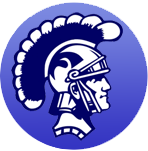

In the 25 years before the invention of the internet, the only way to tell fellow students about campus news was by printing a student newspaper.

University High’s first semester was held in fall 1970 during afternoon sessions on Mission Viejo High’s campus, 15 miles from Turtle Rock. This greatly complicated producing the first newspaper, since Uni had no seniors — the most likely group to own cars. (The 405 Freeway had opened 18 months earlier, making double sessions in Mission Viejo practical, but most students took buses.)
With limited ability to cover faraway events and, crucially, visit the commercial print shop where the newspaper was planned to be printed, the editors settled on a December debut for the unnamed newspaper. The decision to publish was accelerated by the Nov. 22 death of Uni’s widely beloved first principal, Don Castle, who had still been hiring faculty and overseeing construction of the Irvine campus.
Without easy access to a print shop and with Xerox photocopier costs at 3¢ to 10¢ per page, the first issue was printed using an office ditto machine. Ditto technology could only print a few hundred copies, and its purple ink was familiar to every student because most tests and class handouts were printed by teachers on ditto machines.
Dittos were a low-cost compromise: Ditto ink tended to fade after a few months. Also, some ditto machines were hand-crank models that were OK for churning out quizzes but tiresome when producing four-page newsletters 500 or 1,000 times; that’s 4,000 or more cranks of the handle.
The main story in the inaugural issue, by editor-in-chief Sandy Gooch, was about Mr. Castle.
With a small student body, dittoing worked well enough and was cheap. But when Uni moved to the Irvine campus in January 1971, the number of students quickly grew as the old Irvine Ranch was subdivided.
The two nearest commercial print shops to the Irvine campus were in the town of El Toro (now the city of Lake Forest) and near Hoag Hospital in Costa Mesa, so traditional letterpress printing was still impractical. Univine — that was the newspaper’s new name — moved to mimeographing, another inexpensive method.
Mimeo allowed a virtually unlimited number of copies to be cheaply printed in the school office using stencil technology.
Like dittos, mimeo stories had to be hand-typed on a manual or electric typewriter. The newspaper’s nameplate and other illustrations had to be hand-traced, so the Univine nameplate looked slightly different in each issue (see the original nameplate artwork below). As with dittos, photographs could not be printed and artwork looked clumsy. Headlines were created with a black pen and a plastic stencil-like template.
The finished page was placed into a Thermo-Fax, a photocopier-like machine that used infrared light to create the mimeograph stencil. The stencil was then printed on the office mimeograph machine. The entire process involved 1950s technology, with lots of messy mimeograph ink and no computers.
Much of the newspaper staff already knew about mimeo, since that was how the newspaper at Irvine School was produced. Irvine School, which was on Sand Canyon Avenue where the OCTA bus yard is today, produced a monthly mimeo newspaper for the middle school portion of the K-to-8 campus. A less-frequent Spanish-language newspaper, El Perro Dogo, was produced by ditto, since not as many copies were needed.
At Uni, it was not until fall 1971, with seniors and their cars on campus, when Univine could be produced at a community newspaper in El Toro and then later at the print shop in Costa Mesa. In both places, Univine was typeset using ancient Linotype machines and then printed on letterpress presses, essentially the same technology that Mark Twain used a century earlier.
One of the first breaking news stories for Univine was made possible by letterpress printing: Repayment of a loan made by the Tustin High School student government to help launch Uni’s student government. (Until 1972, Uni was part of the old Tustin Union High School District, and Mr. Castle and many of the original Uni teachers were reassigned from Tustin High School.)

With a Univine photographer tagging along, Uni’s student leaders filled a bag with cash and, dressed like gangsters, raided Tustin High and handed over the loot. The story made Univine’s page 1 a few days later.
Among the major news stories in Uni’s first years:
To see Linotypes in action (they are almost hypnotic to watch) view this movie about the end of the Linotype era in the late 1970s. Univine editors went through exactly the same production process as The New York Times, only on a smaller scale and spread over several days instead of several hours.
Univine was issued monthly, as with most high school newspapers, and letterpress printing allowed photography for the first time and also allowed for later deadlines. The newspaper also grew from 8½"x11" ditto and mimeo paper to full broadsheet newsprint, about 15"x22.75". This allowed more news to be printed (88 versus 340 square inches per page) and bolder attention-grabbing headlines and typography.
Another printing technology, offset, replaced letterpress later in the 1970s. Offset is used today for most high school, college and professional newspapers that still print; it’s cheap and fast, and full color can be easily added.
Not until Sword & Shield (the Univine monicker was mercifully dropped) moved to the internet did a modern full-color instant-publication news product become possible. Instead of needing more than a week for the printing cycle from layout to proofing to printing to delivery, stories became instantly publishable.
You can see all of the first-year Univine issues here.



This site maintained (but no longer updated) by Walter Baranger (’74)
Updated 05-Oct-2023